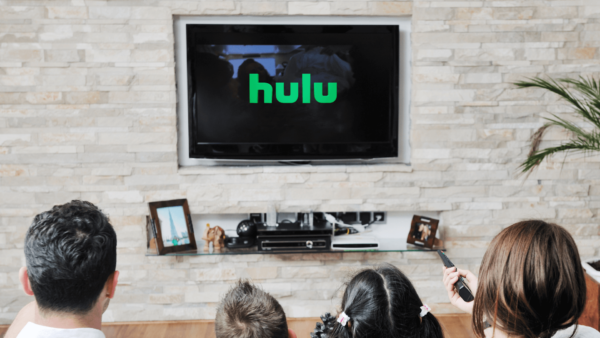
Cracking the Code: Budgeting Tips for Digital Ad Campaigns
Hey, fellow marketers! Ready to take the plunge into the diverse world of ad campaigns on Google, Facebook (Meta), TikTok, Snapchat, Pinterest, LinkedIn, Microsoft, or others?
Let’s crack the code on budgeting for each platform and bring real ROI to your efforts (and if you like an infographic, there’s one at the bottom of this post!).
1. Platform Know-How 101
Before you start allocating funds, it’s crucial to understand the ins and outs of each platform. What rocks on Google might not roll on TikTok, and vice versa.
Dive into the specifics, from audience demographics to ad formats and engagement levels. This is exactly what we do for our clients here at 9 Clouds!
Pro Tip: For the latest stats and insights, subscribe to our blog!
2. Goals Tailored to Each Platform
Different strokes for different folks, right?
Define crystal-clear, measurable goals for each platform. Whether it’s boosting brand awareness on Instagram, generating leads on LinkedIn, or driving vehicle sales on Google, let your goals dictate your budget distribution.
Pro Tip: Craft effective campaign goals using Think with Google.
3. Audience Wisdom
Your audience is the heartbeat of your campaign. Understand who they are, where they hang out online, and what makes them tick. This will guide your budget allocation to platforms where your audience is most active.
Pro Tip: Harness tools like Facebook Audience Insights for a deep dive into your audience’s interests and behaviors.
4. Start Small, Scale Wisely
Don’t go all-in at once. Begin with a modest budget, test the waters, and closely monitor performance.
Allocate more budget to the platforms delivering the best results. Scaling wisely lets you get the most bang for your buck.
Pro Tip: Keep tabs on ad performance metrics using tools like Google Analytics 4.
5. Seasonality and Trends Matter
The digital world is ever-changing, and so are user behaviors. Consider seasonality and trending topics when planning your ad spend.
Boost your budget during peak seasons and leverage trending content for maximum engagement.
Pro Tip: If you’re not sure about the seasonality of your business, collaborate with your sales team to come up with goals that can be supported by digital ads. You can also get insights from Google Trends.
6. Optimize for Conversions
It all boils down to conversions — or the desired goals or actions you want visitors to your website to do.
Regularly optimize your campaigns based on performance data. Adjust your budget to focus on the ads, placements and audiences that drive the most conversions — whether that’s form fills, phone calls or an actual purchase.
Pro Tip: Dive into the Facebook Pixel and Google Tag Manager for effective conversion tracking and optimization.
7. Stay Agile and Adapt
The digital landscape is dynamic, and what worked yesterday might not work tomorrow. Stay agile, ready to adapt your budget allocation based on real-time data and platform updates.
Pro Tip: Stay informed about industry changes with updates from platforms like Search Engine Journal and WordStream.
What Exactly are the Metrics to Watch?
When it comes to budgeting for each of your digital marketing campaigns, focus on outcomes.
For example, if you want to get 1,000 visitors in one month from Facebook, consider the cost per click and the rate at which those clicks turn into visitors.
In this example, we know that the average Facebook cost per link click is about 40¢. We also know that about 6 of every 10 clicks result in a visit.
Now, do the math! ⤵️
To reach 1,000 visitors in one month, you’ll need at least 1667 link clicks. We know that those link clicks are 40¢ each, so that puts your budget at $667 per month.
What about impressions, leads and other outcomes?
The formula doesn’t actually change that much. It’s just a matter of knowing the key performance indicators (KPIs), as well as any industry benchmarks for each ad platform.
The KPIs for each common outcome are:
- Impressions: CPM (Cost Per Mille)
- Website Visits: Link Clicks (not to be confused with clicks, which can go anywhere or be “likes” on an ad) or Landing Page Views
- Leads: Cost per lead form submission (commonly on Meta or LinkedIn)
- Video Views
- And many more!
If you want 50 leads per month from your LinkedIn ads, and you know that each lead costs around $15, then budget $750.
This gives you a great starting point — along with a goal — so that you can adjust in the following months based on your performance.
With these tips and a splash of creativity, you’ll be mastering the art of budgeting for each platform individually in no time.
Why Trust 9 Clouds With Your Ad Budget?
We have more than a decade of experience with Facebook and Google ad budgets — working with companies large and small to reach their audience and generate leads and sales.
Read a few of our case studies to see the work — and more importantly, the results — we’ve been able to provide other clients just like you.
This is one thing you won’t need to stress about! If you want help with budgeting, or if you have any other questions related to digital marketing, just contact us.
YEAH, I want HELP »





